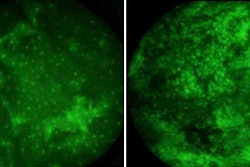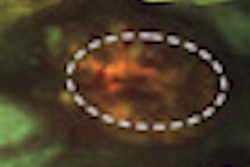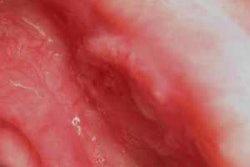A nanobiochip that analyzes specimens from brush biopsies of lesions can help detect oral cancer with success rates comparable to more invasive tests, according to a pilot study (Cancer Prevention Research, April 2010, Vol. 3:4, pp. 518-528).
The diagnostic nanobiochip had 97% sensitivity and 93% specificity in detecting which patients had malignant or premalignant lesions, rates that compare well with traditional tests, reported the researchers from Rice University, the University of Texas Health Science Centers at Houston and San Antonio, and the University of Texas M. D. Anderson Cancer Center.
Their study compared results of traditional diagnostic tests with those obtained with nanobiochips on a small sample of 52 participants, all of whom had visible oral lesions, leukoplakia, or erythroplakia and had been referred to specialists for surgical biopsies or removal of the lesions. Of those patients, 11 were diagnosed as healthy.
"One of the key discoveries in this paper is to show that the miniaturized, noninvasive approach produces about the same result as the pathologists do," said John McDevitt, Ph.D., the Brown-Wiess Professor of Chemistry and Bioengineering at Rice University, in a press release. His lab developed the novel nanobiochip technology at the university's BioScience Research Collaborative. McDevitt and his team are working to create an inexpensive chip that can differentiate premalignancies from the 95% of lesions that will not become cancerous.
Oral cancer afflicts more than 300,000 people a year, including 35,000 in the U.S. alone. The five-year survival rate is 60%, but that rate rises to 90% if the cancer is detected early, according to Rice University.
The minimally invasive nanobiochip technique can deliver results in 15 minutes instead of several days, as lab-based diagnostics do now. Instead of an invasive, painful biopsy, the new procedure requires just a light brush of the lesion on the cheek or tongue with an instrument that looks like a toothbrush.
Patients with suspicious lesions, usually discovered by dentists or oral surgeons, end up getting scalpel or punch biopsies as often as every six months, according to McDevitt. "People trained in this area don't have any trouble finding lesions," he said. "The issue is the next step -- taking a chunk of someone's cheek. The heart of this paper is developing a more humane and less painful way to do that diagnosis, and our technique has shown remarkable success in early trials."
The way forward is with nanobiochips -- small, semiconductor-based devices that combine the ability to capture, stain, and analyze biomarkers for a variety of health woes that also include cardiac disease, HIV, and trauma injuries, according to the researchers. They hope nanobiochips will dramatically cut the cost of medical diagnostics and contribute significantly to bringing quality healthcare to the world.
The chips should also be able to see when an abnormality turns precancerous. "You want to catch it early on, as it's transforming from precancer to the earliest stages of cancer, and get it in stage I. Then the five-year survival rate is very high," McDevitt said. "Currently, most of the time, it's captured in stage III, when the survivability is very low."
The device will undergo a more extensive trial involving 500 patients in Houston, San Antonio, and the U.K., which could lead to an application for FDA approval in two to five years.
Eventually, McDevitt said, dentists may be the first line of defense against oral cancers, with the ability to catch early signs of the disease in the chair.
The researchers received a Grand Opportunity Grant from the National Institute for Dental and Craniofacial Research Division of the National Institutes of Health for their work.
Copyright © 2010 DrBicuspid.com



















